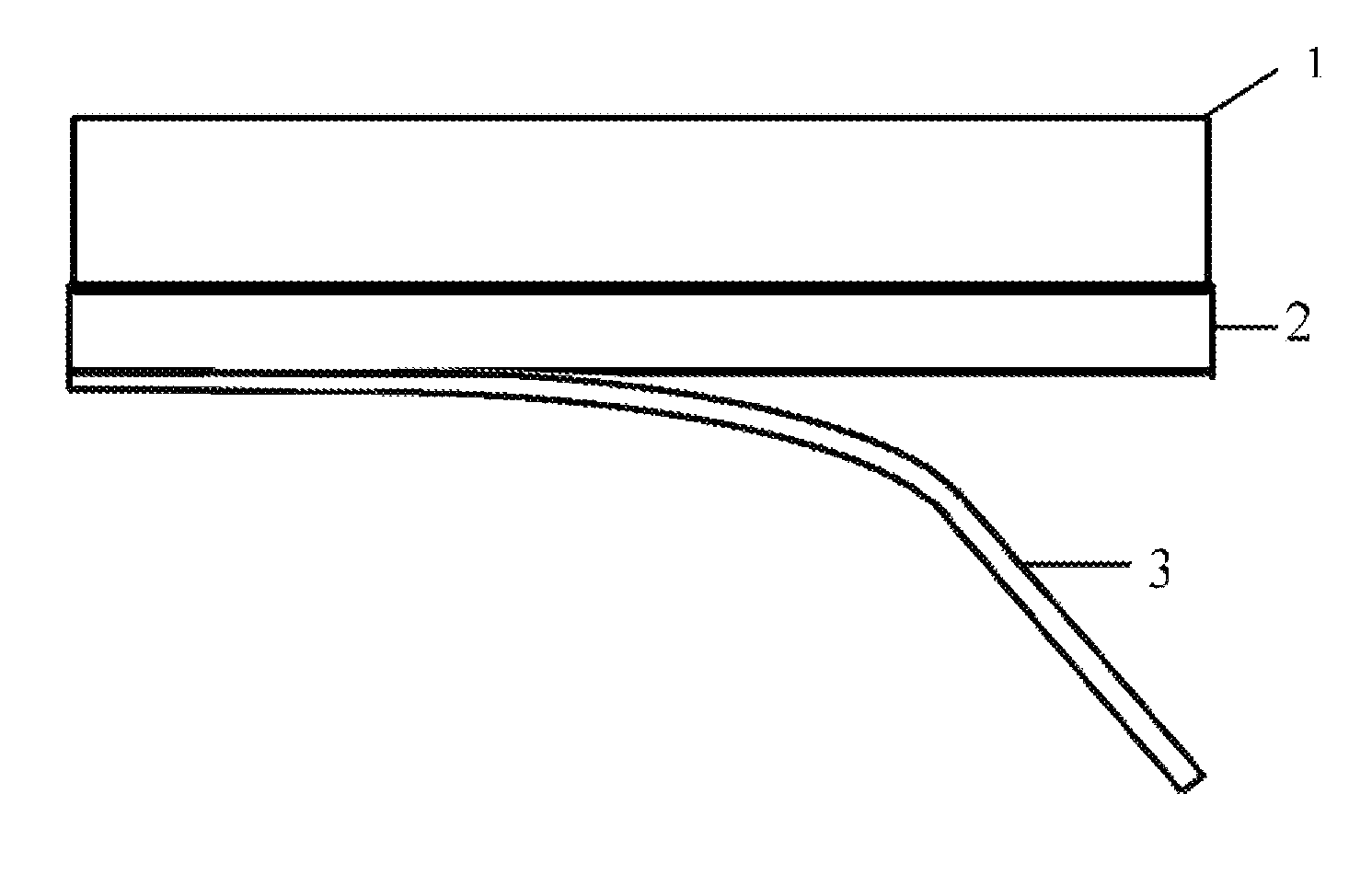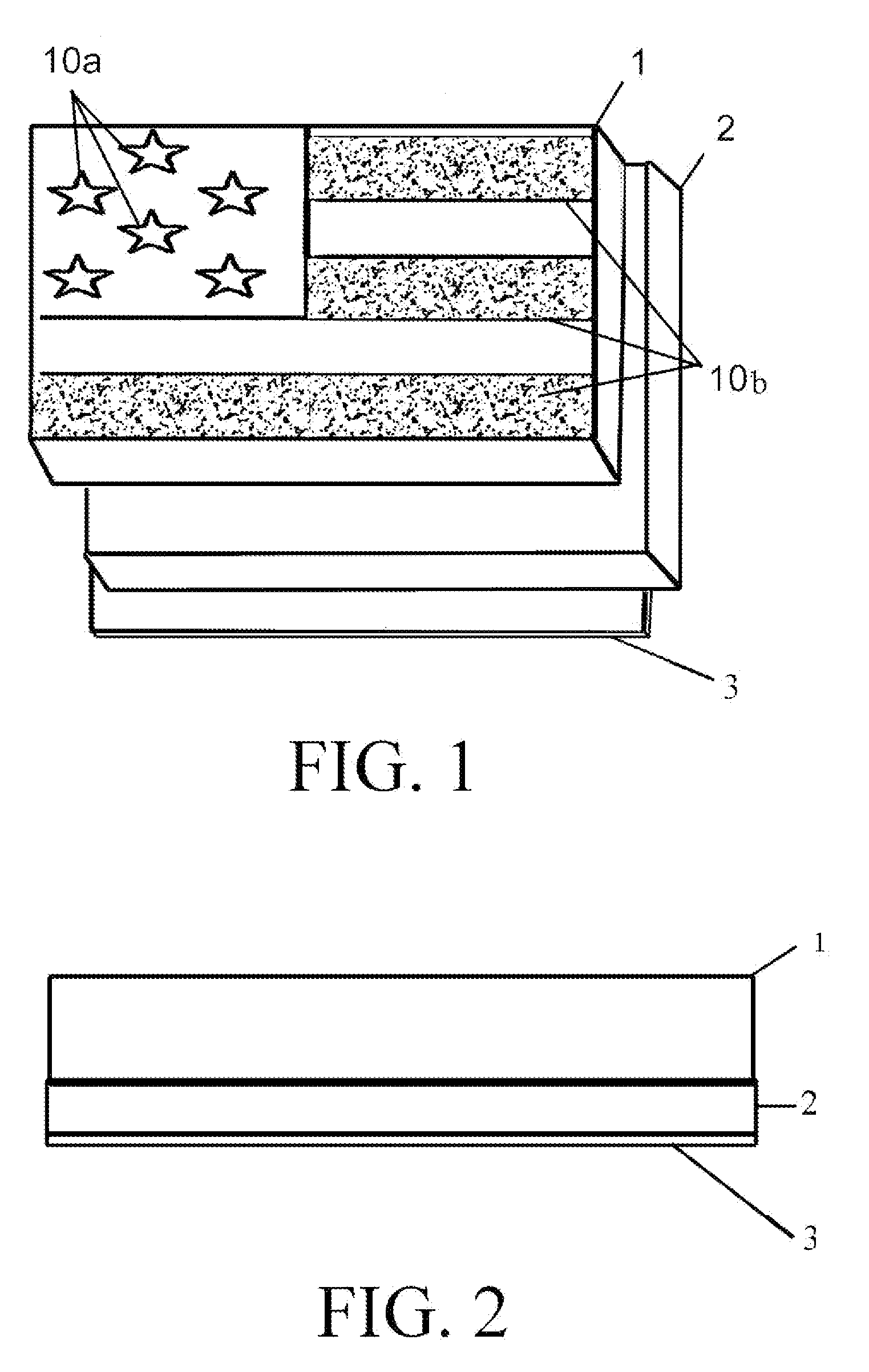Pressure sensitive textile adhesive
a technology of textile adhesive and pressure sensitive, applied in the direction of film/foil adhesive, layered products, chemical instruments and processes, etc., can solve the problems of high labor intensity, complex direct embroidery process, and the creation of unique, expensive special dies, etc., and achieve the effect of durable bonded products
- Summary
- Abstract
- Description
- Claims
- Application Information
AI Technical Summary
Benefits of technology
Problems solved by technology
Method used
Image
Examples
Embodiment Construction
[0039]The present invention is a pressure sensitive adhesive for securing textile products together, and a method of producing an integrated room temperature pressure sensitive emblem bearing text, numbers, logos or other indicia for application to apparel and accessories, as well as the emblem constructed in accordance with the production process.
[0040]The construction utilizing the pressure sensitive adhesive ensures a high inherent bond strength that withstands repeated laundering. The emblem is well-suited for application to any fabric or leather substrate, including coarser non-woven fabrics such as felt and fleece (“substrate” being herein defined as any leather or fabric, whether woven fabric or non-woven fabric, or any other flexible material used for apparel, signage, banners, pennants or similar, and “non-woven” being herein defined as any fabric substrate produced by processes other than weaving).
[0041]With combined reference to FIGS. 1 and 2, the multilayer emblem of the...
PUM
| Property | Measurement | Unit |
|---|---|---|
| frequency | aaaaa | aaaaa |
| frequency | aaaaa | aaaaa |
| loss modulus | aaaaa | aaaaa |
Abstract
Description
Claims
Application Information
 Login to View More
Login to View More - R&D
- Intellectual Property
- Life Sciences
- Materials
- Tech Scout
- Unparalleled Data Quality
- Higher Quality Content
- 60% Fewer Hallucinations
Browse by: Latest US Patents, China's latest patents, Technical Efficacy Thesaurus, Application Domain, Technology Topic, Popular Technical Reports.
© 2025 PatSnap. All rights reserved.Legal|Privacy policy|Modern Slavery Act Transparency Statement|Sitemap|About US| Contact US: help@patsnap.com



